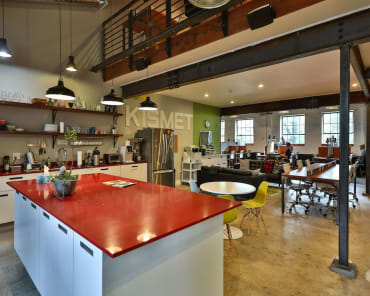
In (2015), Gallup’s poll of more than 80,000 workers publicly revealed what we all secretly knew — at least about our complaining friends. People hate their jobs. Not even hate, which is too strong of a word, but people are indifferent to their jobs. 68% of workers reported being either “not engaged” or “actively disengaged.” In light of these findings, the U.S workforce has been coming to terms with its disengagement epidemic.
They say the opposite of love isn’t hate, it’s indifference. So if the majority of our workforce is indifferent, what does that mean about how society runs — corporations, restaurants, banks, hospitals? Disengagement = inefficiency. Because no matter how hard a disengaged worker pushes him or herself to get things done, a threshold exists. At some point, they detach and mentally check out.
The Problem
Considering the dismal state of many traditional workplaces, our minds could easily wander to the question: How did we get here? Why did the Western workforce slip into a stupor in the first place? How did so many capable minds become zombified in cubicles, producing nothing of value for no one in particular?
Without thinking too hard, you might assume simple negligence — Workers are lazy and they just don’t care. But much subtler reasons drive our adamant adoption of the 9–5 slog: safety and fear. Particularly in the Western World, much of the economy still runs on lingering fears — like the poverty of the Great Depression and job scarcity during the 2008 recession. Couple that with present fears, like rising rent costs (“The national average rent reached an all-time high of $1,405 in June, a 2.9 percent increase from a year earlier.” In Philadelphia, the “median low-income earner” spends 57% percent of their income on rent.) In other words, the workforce as a whole still operates under the assumption of scarcity, which says that there is simply not enough for everyone.
Ironically, in the ‘land of the free,’ we’re also uneasy about freedom in the workplace. Some managers and CEOs resist the idea of a flexible, self-directed company culture because it’s unfamiliar territory. It’s not that company leaders are evil and want their employees to suffer and toil well into eternity. It’s more that they haven’t built up trust in human nature — They don’t trust there will be enough focus, productivity, responsibility, time, etc.
Of course, these fears are legitimate. Many people really have been dragged through the mud to gain the relative financial stability they have today. It would be easy to put our heads down, work hard, and remain a disengaged workforce for the sake of safety. But as Einstein famously said, “You can’t solve a problem from the same mindset that created it.”
The Solution
So what does a stagnant workforce have to do with coworking? Coworking is a step outside of the fear paradigm that has kept the U.S workforce safe, but also disengaged. Coworking doesn’t require bosses to hover over employees making sure they’re not slacking. It doesn’t require a strict 9–5 schedule to get everything done. There is no competition between businesses, but instead collaboration. In other words, coworking assumes that there is enough — enough time, enough motivation in each person, enough resources in the community, etc. This faith in ‘enoughness’ is the exact opposite of scarcity. It makes ‘every man for himself’ (the belief system the Western workforce has run on) irrelevant. It replaces fear with trust and makes room for innovation. And for a wildly disengaged workforce, that’s a step in the right direction.






